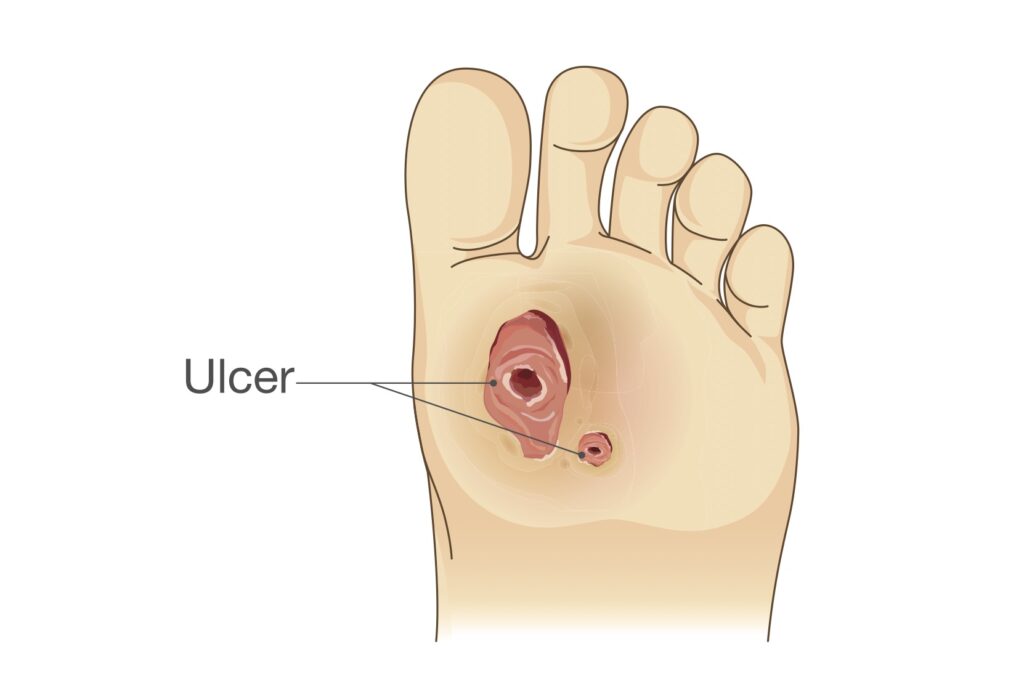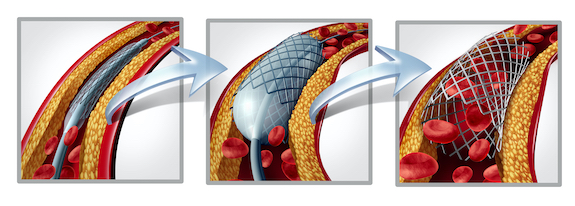Peripheral Arterial Disease
PAD is a common disorder affecting a third of Americans.
Peripheral arterial disease is caused by atherosclerosis or hardening of the arteries which is the accumulation of plaque inside the walls of the arteries causing blockage or stenosis .
This can reduce blood flow to the organs that are being supplied by the arteries. Narrowing of the arteries to the lower extremity decreases the blood supplies to the muscles and connective tissue of the legs with severe consequences.

Peripheral arterial disease symptoms
- Claudication, which is a sensation of pain and cramping in the muscles of the leg or the thigh while walking
- Rest pain in the feet or legs that can happen with or without walking
- Ulcerations in the feet and the legs
- Coolness of the legs and feet
- Pain in the calf and thighs while walking
- Erectile dysfunction
- Gangrene or black discoloration of the toes and feet
If untreated peripheral arterial disease can lead to amputation of the legs with severe disability

Peripheral Vascular Doctor
If you are having any of these symptoms or any other concerning health condition then you should consult with a peripheral vascular disease doctor immediately.

Risk factors for peripheral arterial disease:
- Atherosclerosis or hardening of the arteries
- Smoking high cholesterol
- High blood pressure
- Genetic predisposition
- Obesity
- Inflammatory conditions
- History of radiation to the pelvis
- Diabetes
- History of coronary artery disease or heart attack
- History of stroke
- History of renal disease
- Family history of peripheral vascular disease
- High level of homocystine which is approaching component that helps maintain and build tissues
When to see a doctor
If you have leg pain and numbness or cramping in your legs when you walk or if she has pain at rest, there is a chance that you may suffer from peripheral arterial disease. Even if you don’t have any symptoms of peripheral arterial disease you should be screened if you are over age of 65 or have both risk factors.
Diagnosis of peripheral arterial disease
Physical examination
During physical examination pulses are checked by palpating the pulsations over arteries that at various parts of the body including the groin the back of the knee and the foot. If there is evidence of peripheral arterial disease the, pulses would be diminished or a bruit which is a whooshing sound over the arteries can also be heard with the stethoscope.
Ultrasound
Peripheral arterial surgeons suggest PAD is best diagnosed with an ultrasound of the lower extremity which evaluates the arterial supply to the feet. This is a noninvasive study which is done by placing a probe in various parts of the leg and assessing the circulation this test is done in the office and usually takes about 30 minutes
Further Tests
This can be followed up with a more invasive tests such as angiogram, CAT scan or magnetic resonance imaging test to fully evaluate the extent seen and the anatomy of the artery.
Peripheral arterial disease treatment
- In mild cases of peripheral arterial disease, treatment is nonsurgical and it would include:
- Smoking cessation,
- Diabetes control
- Decreasing improve high blood pressure
- Cholesterol control
- Eating more plan base diet and foods low in saturated fats and maintaining a healthy weight
- Moderate amount of walking also is beneficial since the body can create new small blood vessels called collaterals that would supplement blood supply to the lower extremities
If the symptoms of peripheral arterial disease to not improve or the degree of the stenosis is moderate to severe, then in the arteries minimally invasive procedures such as an Angioplasty, Atherectomy or stent placement can be used to improve the blood supply to the lower extremities.
Angioplasty, Atherectomy or stent placement



During these procedures access is gained in the arterial system using small needle either in the groin the foot or the wrist. Blockage can be reduced by atherectomy devices that act as a Roto-Rooter diminishing the blockage. this can be followed up with a balloon angioplasty or stent placement to improve the blood flow to the lower extremities. these procedures are minimally invasive and are done with no general anesthesia under local anesthesia with sedation
Results are excellent and recovery is rapid. The procedure was can be done in the office. Patients can walk all of the office in the same day and can go back to work the next day
Open surgery for peripheral arterial disease. Arterial bypass surgery is saved for patients who cannot be treated with minimally invasive procedures.
Open surgery requires general or local anesthesia. Naturally during these procedures, a new conduit which is either a synthetic graft or an actual vein from the body is used to bypass it blockage and bring new blood to the lower extremity. These procedures can be done with small incisions in the lower extremity the recovery time is several weeks and length of stay in the hospital could be several days.
Peripheral arterial disease is diagnosed and treated at Encino Vascular Institute with minimally invasive procedures.
Proudly accepting patients in